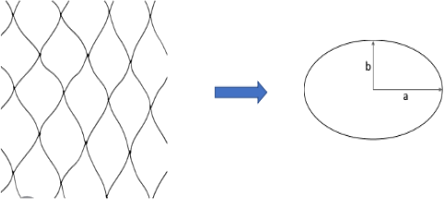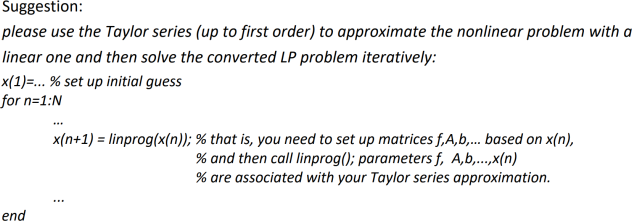Engg7302 Advanced Computational Techniques in Engineering Assignment 1: Optimisation
Hello, dear friend, you can consult us at any time if you have any questions, add WeChat: daixieit
Engg7302 Advanced Computational Techniques in Engineering
Assignment 1: Optimisation
Due date: 24 Apr 23 15:00
Where to submit: Submit the assignment report via the Blackboard Turnitin submission system.
Instruction:
For this assignment, you are required to carry out the process of attempting to solve different optimisation problems. For each question, you are required to report your results in detail. It should include your best solution and its corresponding solution procedures. If you are asked to solve those sub-questions using MATLAB, their MATLAB source code with detailed comments is required.
Marks will be awarded based on how well your submission addresses the above points. This assignment is worth 20% of the total marks for the course.
Question 1 (65 marks)
You have a specific type of chicken wire to build a temporary enclosure for holding a chicken in your backyard. You have 100m chicken wire and want to maximise the enclosure area for your given materials.
(a) You plan to build an ellipse enclosure (see Figure 1). The lengths of the semi-major
axis and semi-minor axis are a and b, respectively.

Figure 1 Chicken house/enclosure with an ellipse shape
Use the following equation to evaluate the perimeter of the ellipse:
![]() p =
p = ![]() "2(a2 + b2 ) [1]
"2(a2 + b2 ) [1]
- Construct a one-dimensional optimisation model and solve it using the Golden Section Search method. Solution details and MATLAB codes are required. (20 marks)
- Construct a two-dimensional optimisation model and solve it using the Lagrange multiplier method. Solution details are required (no MATLAB code required). ( 15 marks)
(b) If it is a rectangular enclosure, please find the rectangular sides x, and y using the Linear
Programming (LP) method.
- Please construct an LP model and write down the tabular form of the formed LP problem. Explain the steps to get to the final tabular form.
- Using the MATLAB function linprog() to find the optimisation solution. Solution details and MATLAB codes are required. (30 marks)

Figure 2 Rectangular enclosure (chicken house).

Question 2 (35 marks)
Use the Gauss-newton method to fit the following experimental data:
t = [0 0.1111 0.2222 0.3333 0.4444 0.5556 0.6667 0.7778 0.8889 1.0000]; y = [2.0000 1.6786 1.4424 1.2625 1.1210 1.0066 0.9118 0.8317 0.7630 0.7033]; where t denotes time (sec), and y represents output.
f(X, t) = X (1)e"x(2)t + X (3)e"x(4)t + X (5)e"x(6)t [2]
Where X(1), X (2), . . , X (6) are the fitting parameters to be determined.
(a) Construct an optimisation model and develop your code for this fitting problem. In your report, show two iterations ofyour Gauss-newton method-based implementation. Solution details and MATLAB codes are required. (25 marks)
(b) Suppose we pre-know some parameters: X (2) = 0.5, X (4) = 2, X (6) = 5, construct an optimisation model and develop your code for this fitting problem. Solution details and MATLAB codes are required. ( 10 marks)
2023-04-20